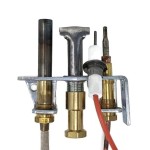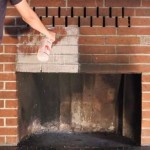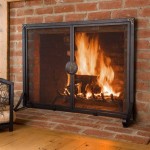Antique Brass Fireplace Tool Sets: A Timeless Addition to the Hearth
Antique brass fireplace tool sets represent more than just functional implements; they are tangible links to bygone eras, imbued with craftsmanship and historical significance. These sets, typically comprising a poker, shovel, tongs, and often a brush, served a vital purpose in managing and maintaining open hearth fires, a central feature of homes for centuries. Their aesthetic value, particularly when crafted from brass, elevates them beyond mere utility, transforming them into decorative accents that enhance the ambiance of a fireside setting.
The allure of antique brass stems from a combination of factors. Brass, an alloy primarily composed of copper and zinc, possesses a warm, golden hue that deepens and develops a rich patina over time. This natural aging process imparts character and depth, making each antique brass piece unique and visually appealing. Furthermore, brass is relatively durable and resistant to corrosion, ensuring that fireplace tool sets crafted from this material could withstand years of use and remain aesthetically pleasing. The inherent malleability of brass also allowed artisans to create intricate designs and embellishments, further enhancing their desirability.
The historical context of antique brass fireplace tool sets adds another layer of intrigue. Prior to the widespread adoption of central heating, fireplaces were the primary source of warmth and cooking in many homes. Fireplace tools were essential for tending to the fire, controlling its intensity, and removing ashes. The style and quality of the tool set often reflected the social status and aesthetic preferences of the homeowner. Elaborately crafted brass sets with ornate handles and decorated stands were indicative of wealth and sophistication, while simpler, more utilitarian sets were commonplace in more modest dwellings.
Identifying and assessing antique brass fireplace tool sets requires careful consideration of several factors. The material composition, design style, maker's marks, and overall condition all contribute to determining the age, authenticity, and value of the set.
Material Composition and Manufacturing Techniques
Understanding the composition of the brass is crucial in evaluating the authenticity of an antique piece. While modern brass is often precisely formulated, older brass alloys could vary considerably depending on the availability and purity of the constituent metals. The presence of impurities or variations in zinc content can influence the color and patina of the brass. Techniques such as X-ray fluorescence (XRF) analysis can be employed to determine the elemental composition non-destructively, providing valuable information about the origin and age of the material.
Furthermore, the method of manufacture provides clues. Early brass items were often cast using sand casting or lost-wax casting techniques. Sand casting involves pouring molten metal into a mold made from sand, while lost-wax casting employs a wax model that is subsequently melted away to create a ceramic mold. The surface texture and details evident on the brass can reveal the specific casting process used. Later, more efficient manufacturing methods like pressing and machining were introduced, leading to smoother surfaces and greater precision in detail. The presence of file marks or other evidence of hand finishing can also indicate older production methods.
The handles of the tools themselves were often made from a variety of materials, including wood, bone, ivory, or other metals. The choice of handle material and its method of attachment can provide further insights into the age and style of the set. For instance, wooden handles might be secured with hand-forged rivets or screws, while more elaborate handles could be intricately carved or inlaid. The condition of the handles is also important; significant wear, damage, or replacements can affect the overall value and authenticity of the set.
Design Styles and Historical Periods
Antique brass fireplace tool sets reflect the prevailing design styles of the periods in which they were made. Different historical eras favored particular aesthetic elements, influencing the shape, ornamentation, and overall appearance of the tools and their accompanying stands. Recognizing these stylistic features is essential for dating and classifying antique sets.
For example, during the Georgian period (1714-1830), fireplace tools often featured elegant, symmetrical designs with neoclassical motifs such as acanthus leaves, swags, and urns. Handles might be made of ivory or bone and intricately carved. The stands were typically simple and functional, often made of wrought iron or brass.
The Victorian era (1837-1901) witnessed a proliferation of ornate and elaborate designs. Victorian fireplace tools often incorporated floral patterns, gothic arches, and other decorative elements. Handles might be made of wood, brass, or even ceramics, and the stands became more elaborate, often featuring multiple tiers and intricate castings. The use of mass-production techniques also became more prevalent during this period, leading to a greater variety of styles and price points.
Art Nouveau (roughly 1890-1910) introduced a distinctive organic style, characterized by flowing lines, asymmetrical compositions, and motifs inspired by nature. Art Nouveau fireplace tools often featured stylized floral designs, sinuous curves, and hammered surfaces. The stands were often designed to complement the flowing lines of the tools, creating a cohesive and visually striking ensemble.
The Arts and Crafts movement (roughly 1880-1920) emphasized handcrafted quality, simplicity, and functional design. Arts and Crafts fireplace tools typically featured clean lines, minimal ornamentation, and a focus on the natural beauty of the materials. The use of hand-hammered brass and hand-forged iron was common, and the designs often reflected a rejection of mass-produced, overly ornamented Victorian styles.
Maker's Marks and Provenance
The presence of maker's marks can be invaluable in identifying the origin and authenticity of an antique brass fireplace tool set. Maker's marks are stamps or engravings that indicate the manufacturer or artisan who created the piece. These marks can provide crucial information about the age, location, and reputation of the maker.
Researchers can consult various directories and reference books to identify maker's marks and learn more about the manufacturers associated with them. However, the absence of a maker's mark does not necessarily indicate that a piece is not authentic. Many smaller workshops and individual artisans did not consistently mark their work, especially in earlier periods. In these cases, stylistic analysis and material examination become even more important.
Provenance, the history of ownership of an antique, can also contribute to its value and authenticity. If the set has a documented history of ownership, such as a bill of sale or a letter of provenance, it can provide valuable insights into its origin and age. Provenance can also help to establish a link to a particular historical event or individual, further enhancing its desirability.
The condition of an antique brass fireplace tool set significantly impacts its value. Sets in excellent condition, with minimal wear and original components, command higher prices. However, some wear and tear is to be expected on antique items, and a certain amount of patina can actually enhance their character. Significant damage, such as broken handles, missing components, or extensive corrosion, can reduce the value of the set.
Cleaning and preserving antique brass requires careful consideration. Harsh cleaning agents can damage the patina and underlying metal, diminishing their value. Gentle cleaning with a soft cloth and mild soap is generally recommended. If more extensive cleaning is necessary, it is advisable to consult with a professional conservator who specializes in antique brass. Applying a protective wax coating can help to prevent further tarnishing and protect the surface from scratches and moisture.
The enduring appeal of antique brass fireplace tool sets lies in their ability to evoke a sense of history and craftsmanship. More than just functional objects, they serve as tangible reminders of a time when fireplaces were the heart of the home and skilled artisans dedicated their talents to creating beautiful and enduring objects. By understanding the materials, styles, and historical context of these sets, collectors and enthusiasts can appreciate their artistic merit and preserve their legacy for future generations.

Vintage Brass Companion Set Fireplace Tools Shovel

Old Brass Iron Fireplace Tools English Country Home

Brass Fireplace Tool Set T4965 Charles Nijman Antiques

Early 20th Century French Antique Polished Brass Fire Tool Set High Style Deco

Minuteman International 30 5 In Tall Piece Antique Brass Oxford Fireplace Tool Set X820946 The Home Depot

Vintage Brass Fireplace Tool Set Olde Good Things

Nice Fireplace Set Made From Brass Vintage Tool
Vintage Equestrian Horse Head Brass Fireplace Tool Set 4pcs

Brass Fireplace Tool Set Showplace

Shiney Vintage Brass Fireplace Tool Set W Stand Brush Shovel 5 Piece
Related Posts








